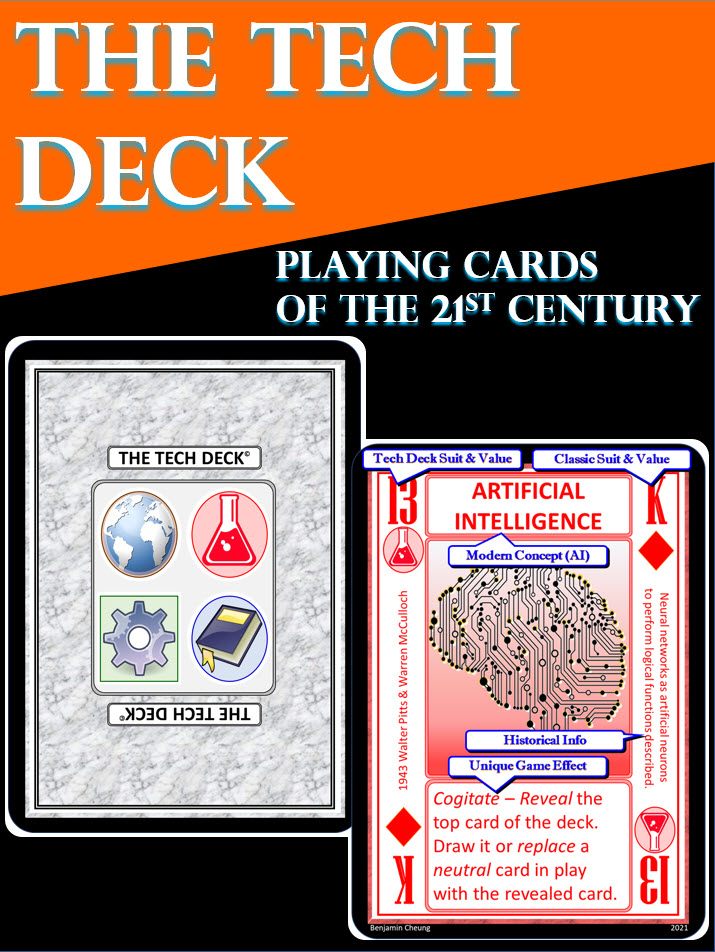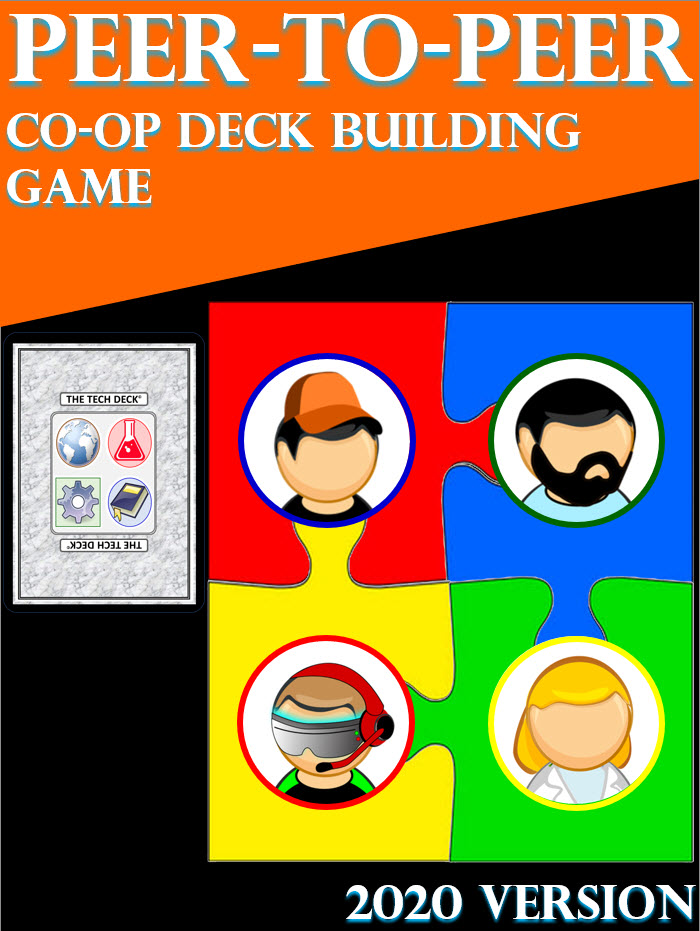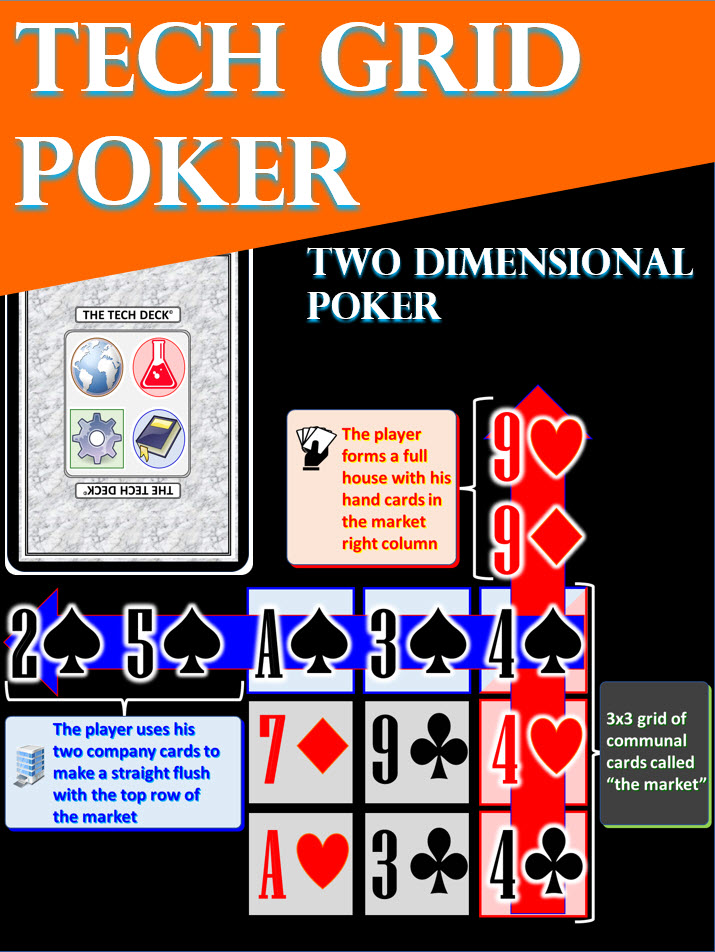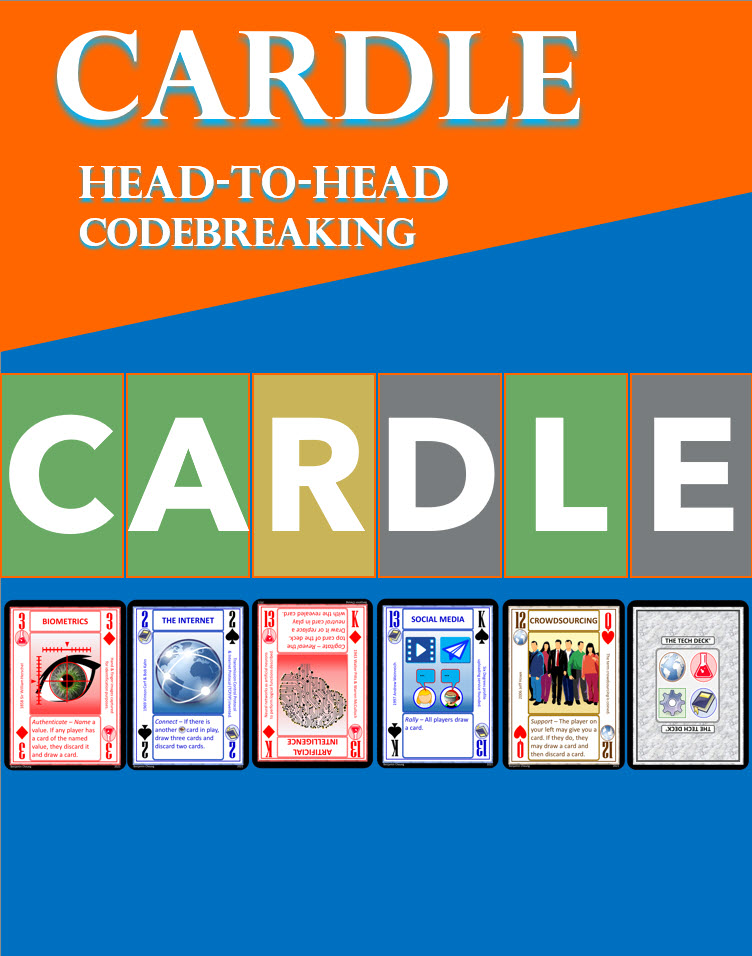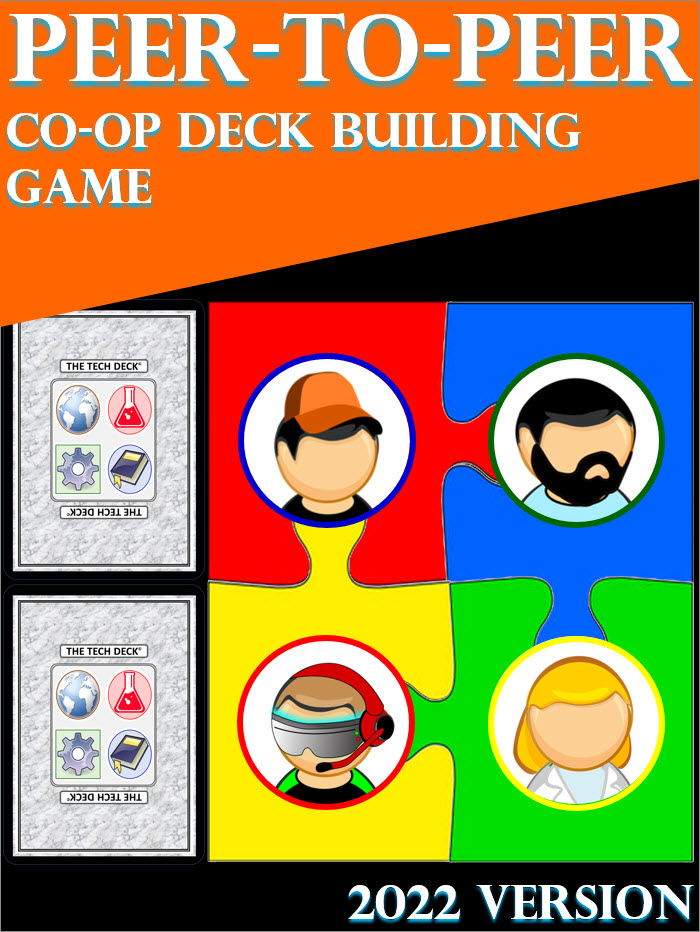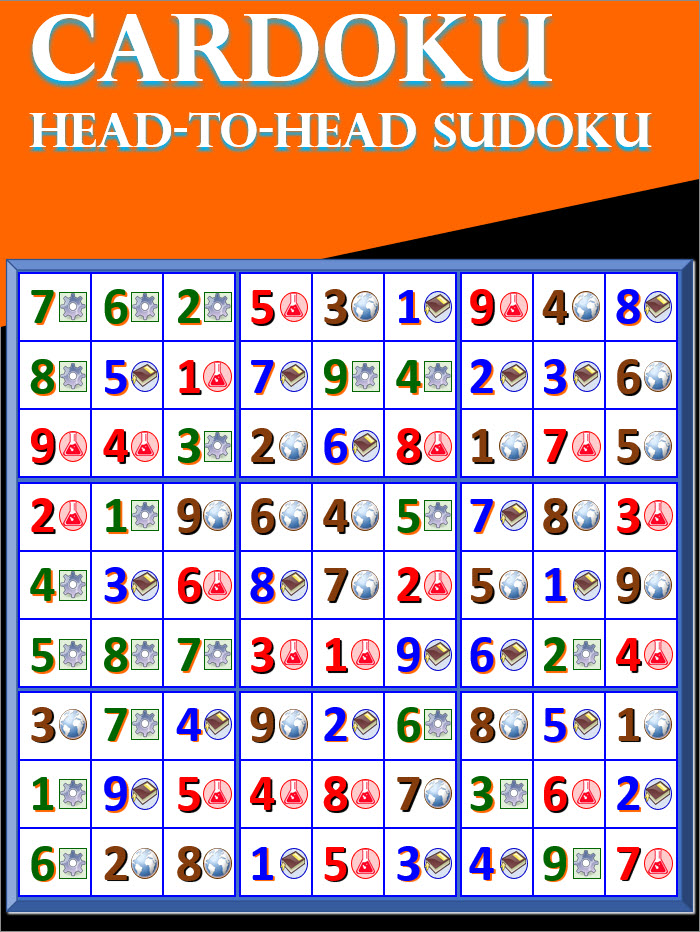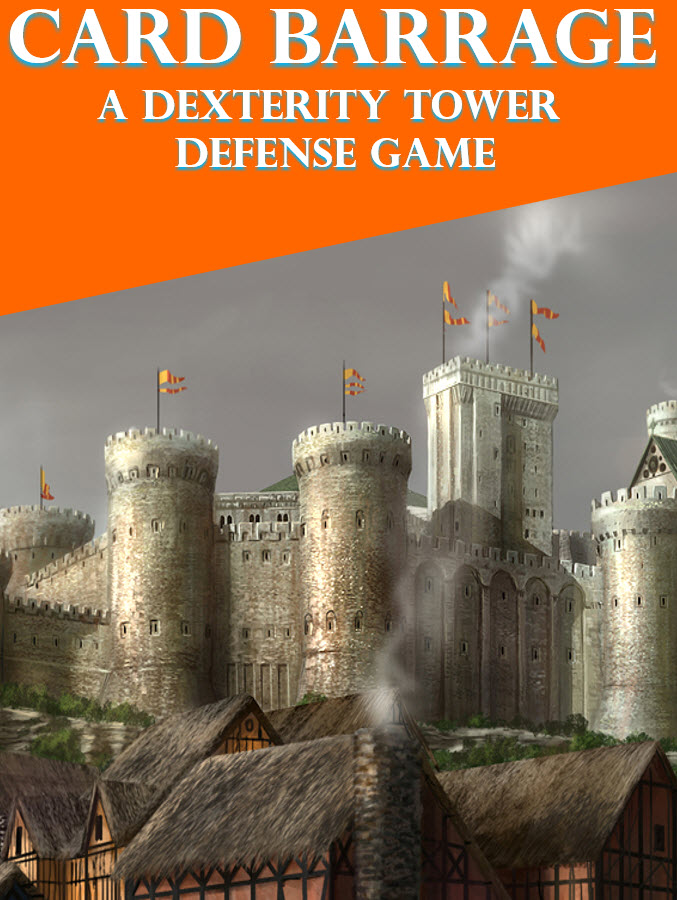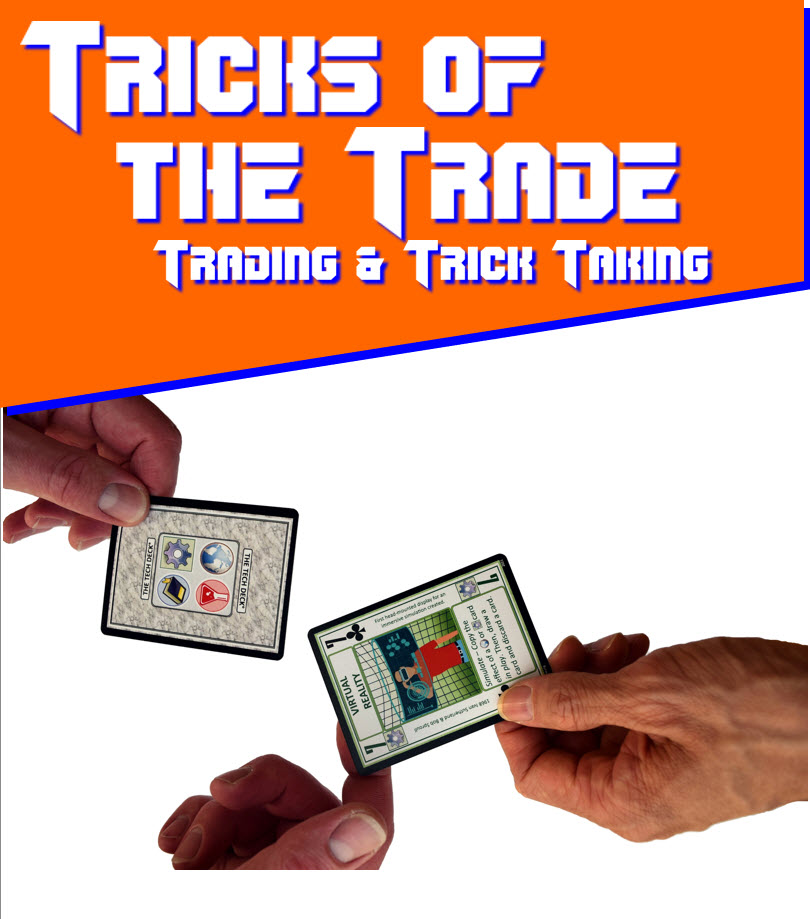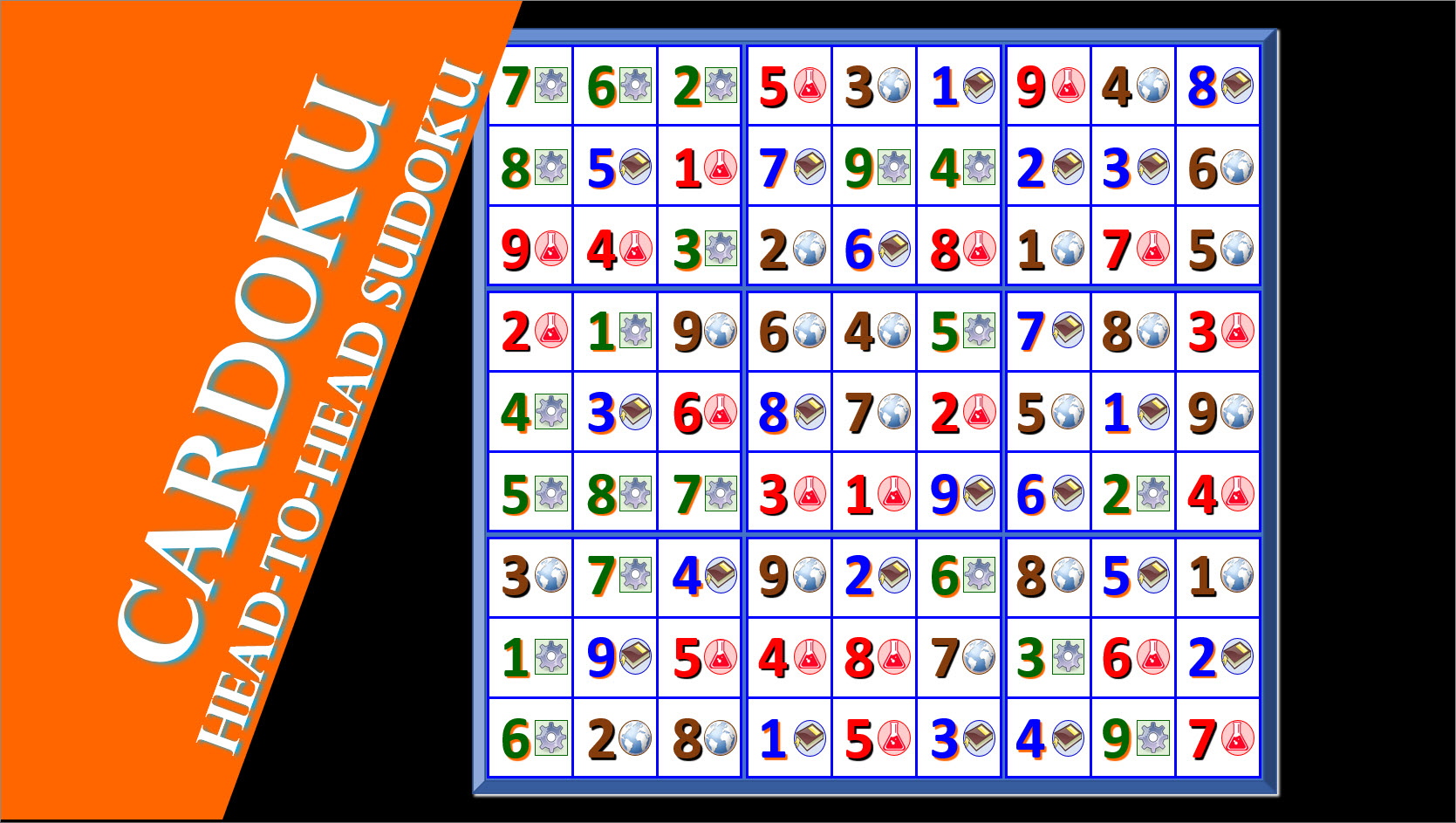
GAME CONCEPT
Cardoku is a head-to-head puzzle game based on Sudoku concepts.
Players play the Tech Deck cards in a (9x9) grid play area.
Players compete against each other to complete rows, columns and
(3x3) boxes. As they complete rows, columns and boxes, they score
points. Cardoku requires that each player use a Tech Deck.
Each row, column and (3x3) box in the (9x9) tableau can contain exactly
one card of value 1 through 9.
GAME SETUP
CREATE TEAMS -
Play head-to-head or in teams. If you have more than 3 players, divide the players into two teams.
SETUP DECKS -
You can play with either 2 or 3 Tech Decks. If you play with 2 Tech Decks, each player/team has one Tech Deck. If you play with 3, add a random domain (suit) to each team/player’s deck from the 3rd deck.
EXPEL CARDS -
Expel (remove) all the wild cards and cards of value 10 and higher from each player’s deck.
SEED BOXES -
Cardoku is played in a 9x9 grid for the cards. Randomly deal one seed card into each (3x3) box with each card in a different column and row than the other cards. Alternate between using one player/team’s deck and another. You may use a grid sheet (e.g. from Tech Chess) or other face-down cards to help visualize the 9x9 grid.
DRAW CARDS -
Each player/team draws 10 cards into their hand from their respective decks.
FIRST PLAYER -
Randomly determine a first player.
Step 3 of Setup
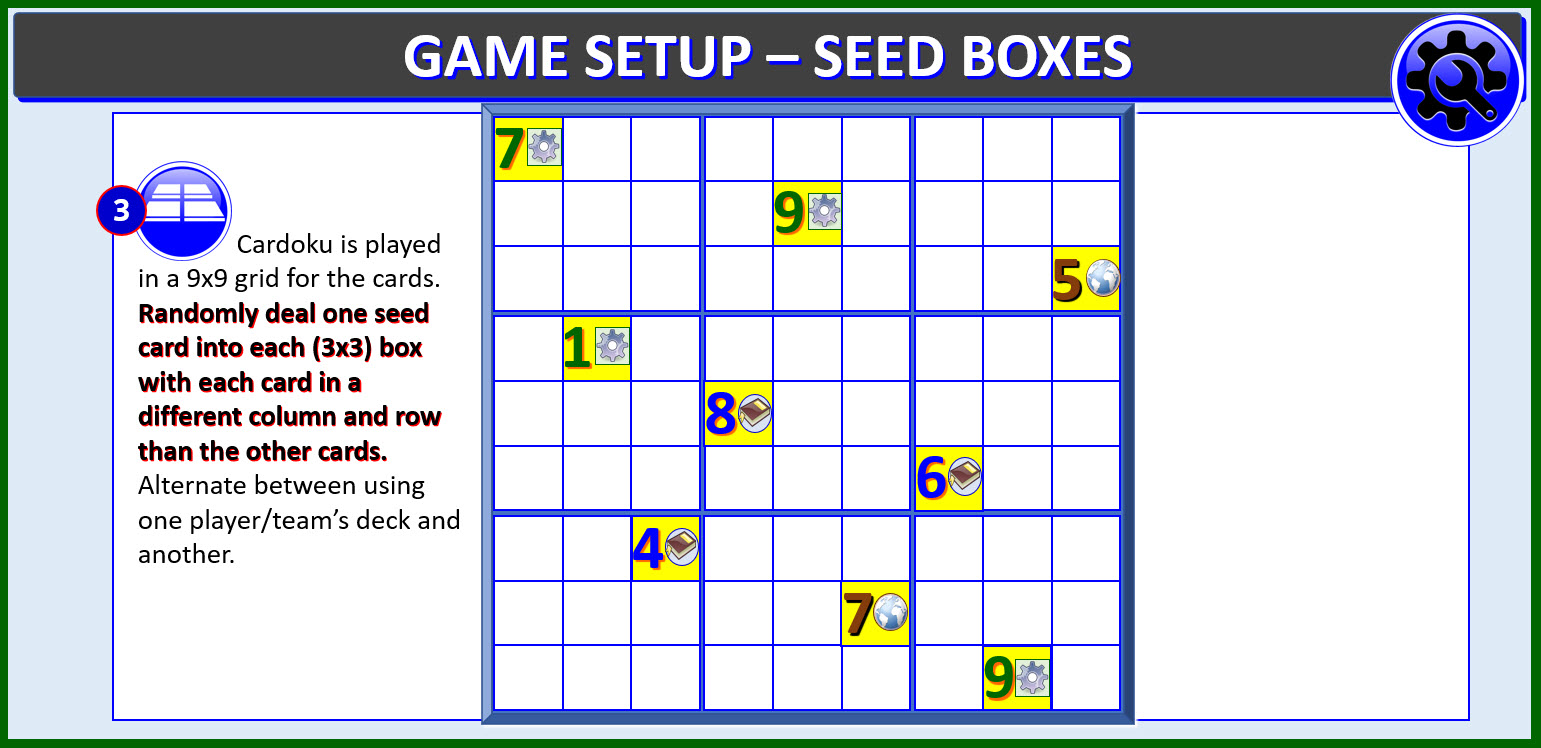
This is what the board looks like after setup:
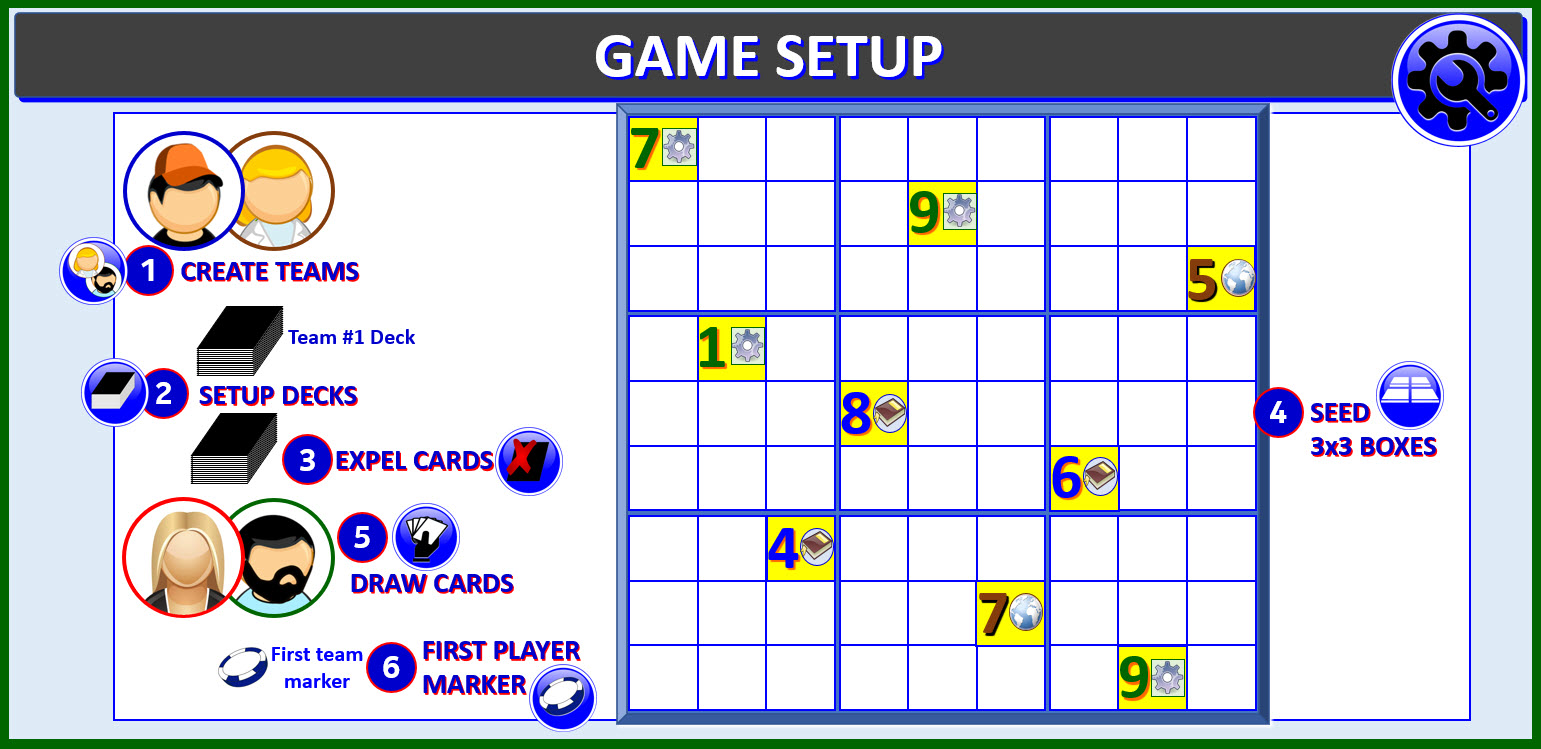
GAME PLAY OVERVIEW
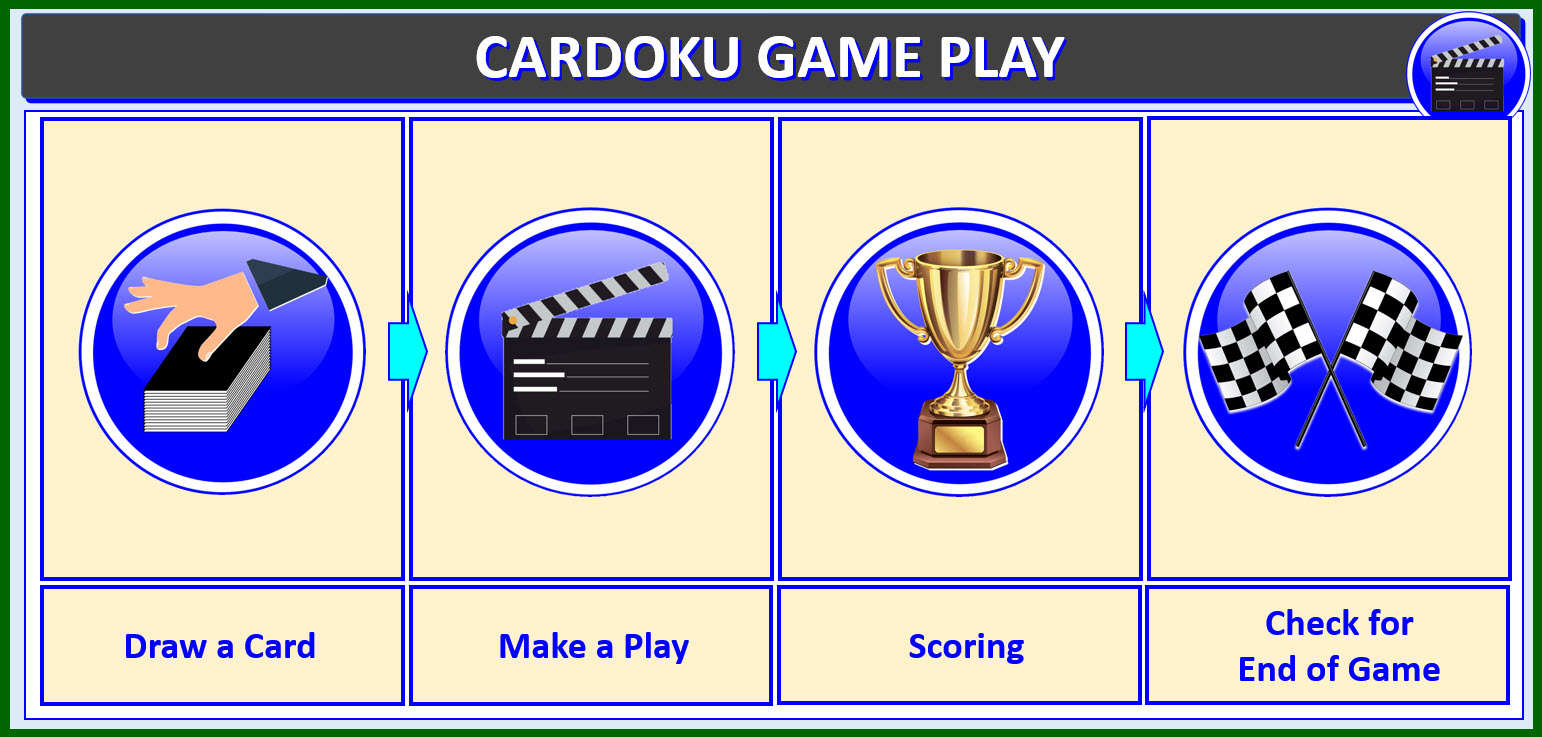
Each turn a player does the following:
DRAW A CARD -
Draw a card from their play deck.
USE VENTURES & GROUP EFFECTS - Players may use game effects from one of their venture card and group hand card each once a round.
MAKE A PLAY -
A player may either Play a card, Move a card, or Swap two cards.
PLAY A CARD -
Play a card into the tableau. The value of the card must be unique in the row, column & 3x3 box.
MOVE A CARD -
If there are no cards in a player’s deck, that player may move a card following Sudoku rules.
SWAP TWO CARDS -
If there are no cards in a deck, the player may swap two cards each obeying Sudoku rules.
SCORING -
If you complete a row, column or (3x3) box, score 1 point. It is possible to score multiple points in a turn if you simultaneously complete a row, column, and/or (3x3) box. (3x3) boxes score using 9 cards. In a 2-deck game, score on rows or columns with a sequence of 1 through 8 or 2 to 9. 3-deck games complete row/columns with 9 cards.
CHECK FOR END OF GAME -
The game ends when either all players have no cards in hand or there are no more possible plays. If the game did not end, play passes to the next player.
DETAILS ON MAKING A PLAY
The following describes making a play in more detail.
PLAY A CARD -
A player must play a card into the (9x9) tableau. The tableau is composed of nine (3x3) boxes. The play must follow sudoku rules. That is, the value of the card you play must be unique in the row, column and (3x3) box. For example, if you play the 5-Technology in the 2nd row, 3rd column position, there must not be any other 5 value card in the 2nd row, 3rd column and the upper left (3x3) box. The domain (suit) of the card does not matter.
MOVE A CARD -
If a player has no cards left in their deck, they may move a card instead of playing a card. Locked cards may not be moved. A card is locked if the row, column, or (3x3) box that it is in has nine cards in it. To move a card, place it into any empty position in the tableau. The placement must follow sudoku rules: the value of the card placed must be unique in that row, column, and (3x3) box.
SWAP TWO CARDS -
If a player has no cards left in their deck, they may swap two cards instead of playing a card. Locked cards may not be swapped. A card is locked if the row, column, or (3x3) box that it is in has nine cards in it. To swap two cards, exchange the placement of two cards in the tableau. The placement of each card must follow sudoku rules: the value of the cards you place must be unique in the row, column, and (3x3) box.
ERRORS -
If there is a misplay by the active player, correct the misplay. If an error is discovered in the tableau from a previous play, place the errored card(s) on the bottom of the deck of the player who has the fewest cards in deck.
EXAMPLES OF MAKING A PLAY
The following diagram shows a example of making a play:
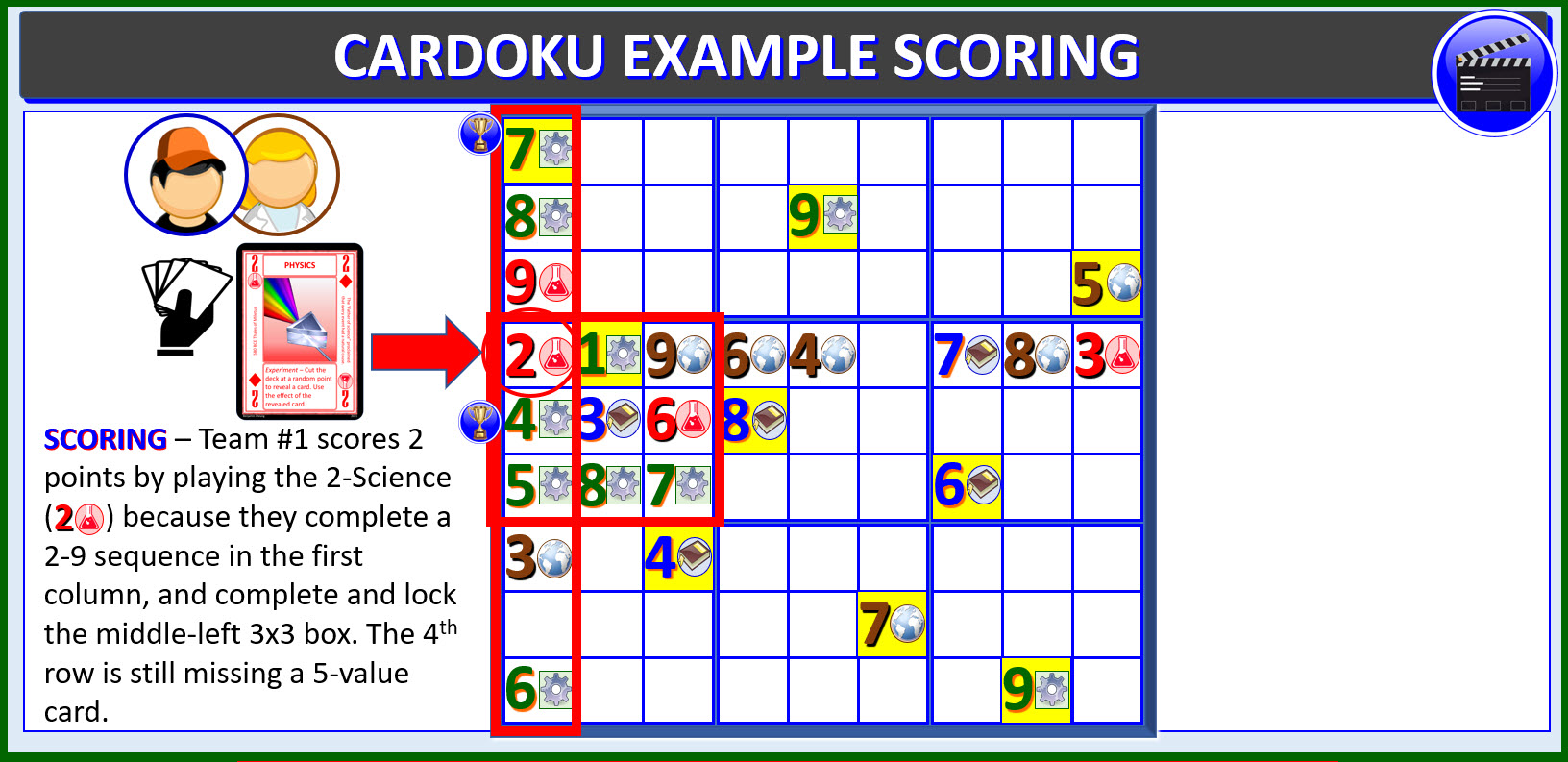
Here, Team #1 plays the 2-Science into the first column and 4th row of the (9x9) tableau (Play area). There are no other value-2 cards in the first column, 4th row or the left-middle (3x3) box, so it is a legal play.
The following diagram shows how scoring would work on the play in the example.
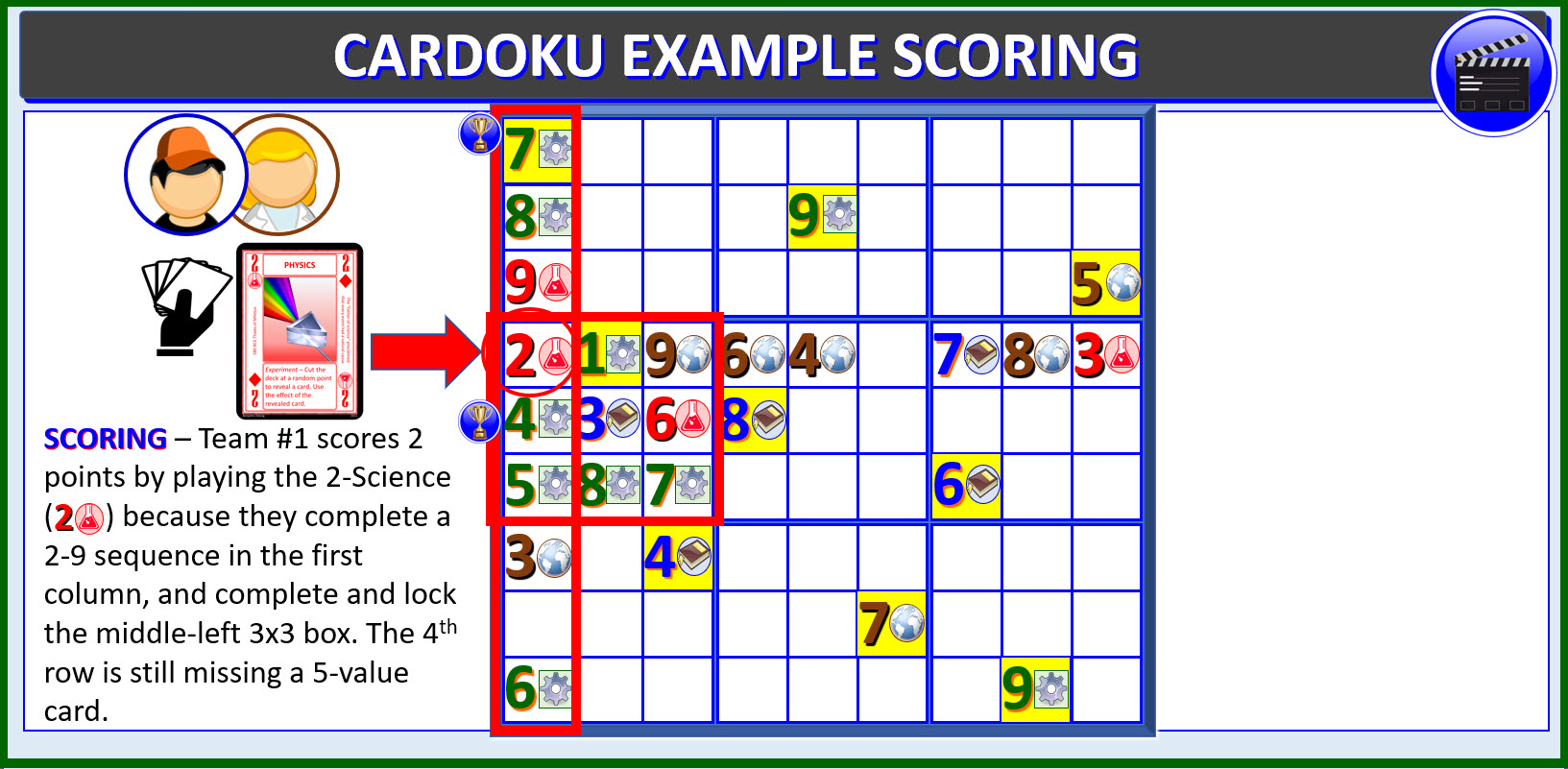
From the play of the 2-Science into the first column and 4th row of the (9x9) tableau, Team #1 would score 2 points. They are playing in a 2-deck Cardoku game so they can score by a sequence of 1 through 8 or 2 through 9. So they score point from column 1. They score a point on the left-middle (3x3) Box, and also score a point on the 4th row. On this play they score 3 points.
EXAMPLES OF SCORING
The following diagram shows an example of a final board state:
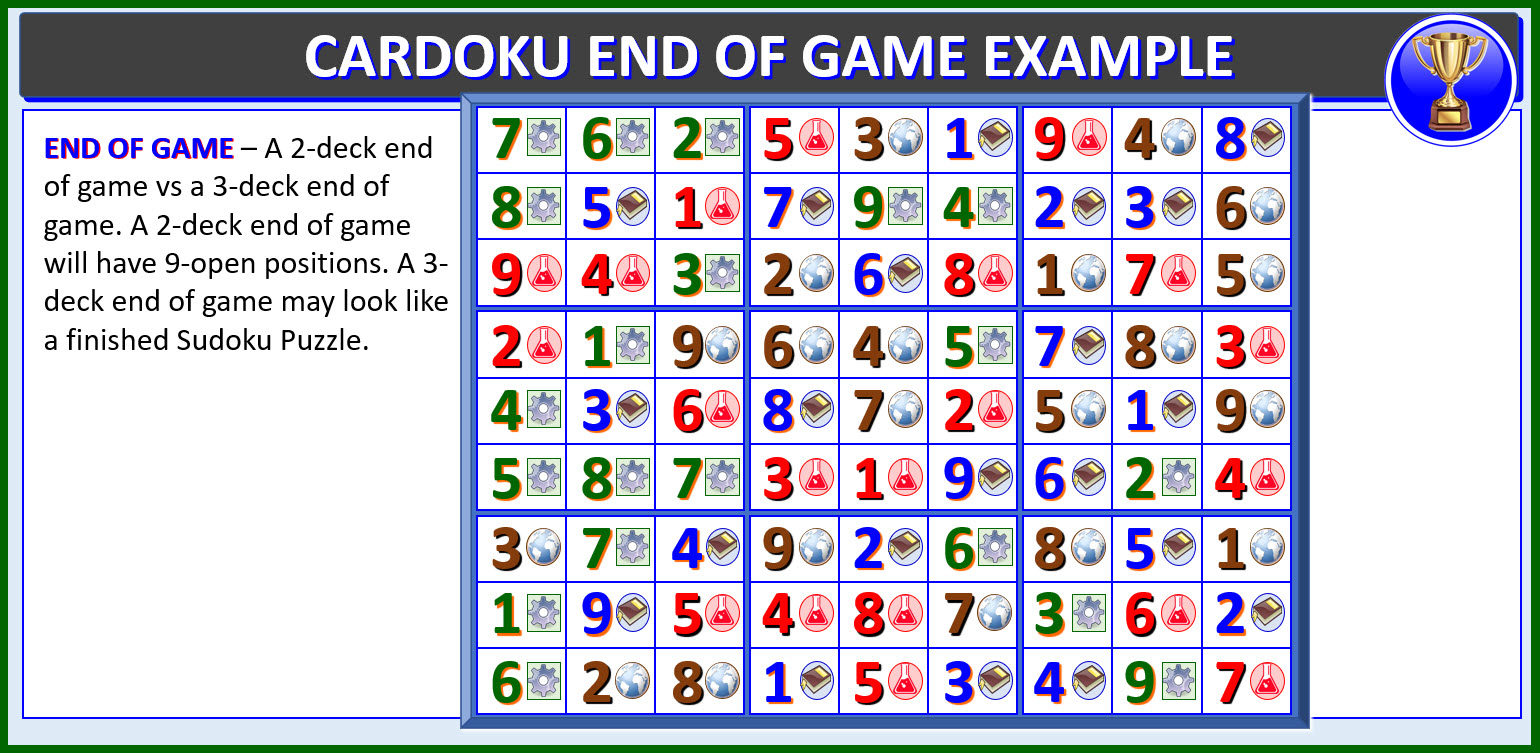
Notice that no card value repeats in any row, column or (3x3) box.
The difference between a 2-deck end of game vs a 3-deck end of game
is that a 2-deck end of game will have 9-open positions.
With proper plays, moves, and swaps it is possible for a 3-deck
end of game to look like a finished Sudoku Puzzle.
DOWNLOAD THE RULES
Cardoku Full Rules:
Cardoku Rules
INTRODUCTION VIDEO
Watch a video on the introduction of Cardoku.
The introduction video describes the basic concepts, objectives and an
introduction to the Tech Deck.
PLAY GUIDE VIDEO
Watch a play guide video for Cardoku.
The play guide video is an in depth video on how to setup the game,
and all the steps involved in playing the game.
ENTRY ON BOARD GAME GEEK

You can read and explore the
BoardGameGeek entry for Cardoku.
PUBLICATION INFORMATION
·
Published: September 1, 2022
·
Format: Card Game
·
Elements: 54 Cards
·
Size: 3.75" x 2.8751" x .875"
ORDERING CARDOKU
·
To purchase the Tech Deck:
Contact Me
EXPLORE OTHER GAMES
